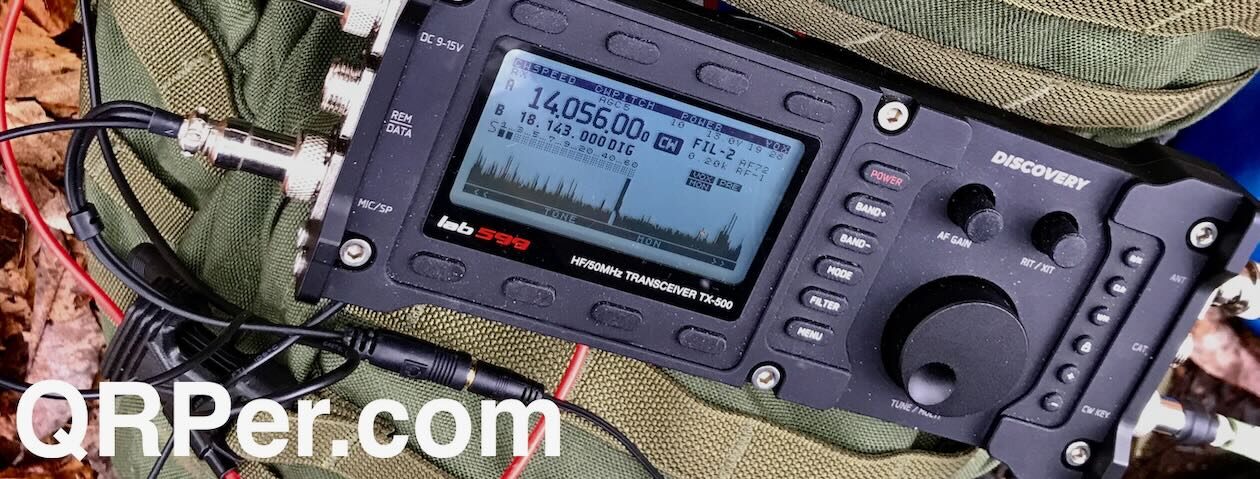Friday, February 28, 2025, felt like another “rinse and repeat” day—a pattern I’ve grown used to over the past few weeks.
That morning, I woke up early, published a post on QRPer.com, and by 7:30 AM I was outside with my chainsaw, preparing piles of tree debris for the skid steer operator we hired to move it to the roadside.
As you might imagine, he can collect debris much faster than I can cut and prepare it, so my goal has been to stay ahead of him. I worked steadily all morning and, combined with what I had cut the previous day, managed to prepare enough to keep him busy for the rest of the day. That was fortunate because I needed to help my daughters with activities in town all afternoon.
Finding POTA time
I’ll be honest—after grabbing a quick lunch and a shower, I was pretty worn out. Part of me wanted to use any spare time to sneak in a nap. But I also knew I could use a little POTA therapy, and the weather was unseasonably gorgeous—almost spring-like.
Looking at my schedule, I realized I had about an hour to spare, enough time to detour and activate Pisgah National Forest (US-4510) at the Sycamore Flats Picnic Area. It was the most convenient spot along my route that afternoon.
As for radio gear, I already had my Elecraft K1 packed from an earlier activation that week (which I also recorded and will post soon—obviously, out of chronological order!).
 For variety, I didn’t want to use the same antenna as the previous activation. Instead, I grabbed one of my favorite compact antennas to see how well it would pair with the K1: the Elecraft AX1.
For variety, I didn’t want to use the same antenna as the previous activation. Instead, I grabbed one of my favorite compact antennas to see how well it would pair with the K1: the Elecraft AX1.
If you’ve followed QRPer for long, you’ll know I often use the AX1 during both POTA and SOTA activations. Despite its extreme size compromise, it has always performed well for me.
Loaded verticals like the AX1 typically have a high Q (narrow bandwidth) and benefit from an ATU or capacity hat to help with impedance matching. Luckily, my new-to-me Elecraft K1 has the optional built-in ATU, meaning I could attach the AX1 directly to the back of the radio.
I’ll save the full story of how I acquired this particular K1 for my next field report, but let’s just say I’d been hunting one for a long time—and this one showed up locally. It’s a four-band version (40, 30, 20, and 15 meters) with both the ATU and internal AA battery pack options.
Sycamore Flats Picnic Area
 I arrived on site around 13:35 local time and had about 45 minutes to play radio.
I arrived on site around 13:35 local time and had about 45 minutes to play radio.
I started the activation video and walked through the picnic area until I found a good table. Truthfully, though, the beauty of using the AX1 is that almost any flat surface will do—it’s that low-profile and low-impact.
 Once I found a table, setup was super quick: I placed the K1 on the table, connected a battery, attached my Palm Mini paddle (its maiden POTA voyage!), and plugged the AX1 directly into the back of the radio. I wasn’t in a hurry–and it truly shows in the video–but I’m confident I could have deployed the entire station in about 60-90 seconds if required. That’s the magic of the AX1—minimal setup time.
Once I found a table, setup was super quick: I placed the K1 on the table, connected a battery, attached my Palm Mini paddle (its maiden POTA voyage!), and plugged the AX1 directly into the back of the radio. I wasn’t in a hurry–and it truly shows in the video–but I’m confident I could have deployed the entire station in about 60-90 seconds if required. That’s the magic of the AX1—minimal setup time.
 With everything connected, it was time to hit the airwaves!
With everything connected, it was time to hit the airwaves!
Gear
Note: All Amazon, CW Morse, ABR, Chelegance, eBay, and Radioddity links are affiliate links that support QRPer.com at no cost to you.
Radio
- Elecraft K1 (four band version with optional ATU and internal AA battery pack)
Key
- Palm Mini Paddle with new connection cord
Antenna
- Elecraft AX1with 3D-printed Bipod (clip and knob by K6ARK and bipod legs by KE8PTX)
Pack and Case
Logging Supplies
Battery
Camera/Audio Gear
- DJI OSMO 4 action camera with Joby Telepod Sport Tripod
- DJI Wireless Microphones
On The Air
 Once on the air, I was thrilled to have no problem collecting hunters for the logs. Continue reading Pairing the Elecraft K1 and AX1 for low-profile, low-impact portable POTA!
Once on the air, I was thrilled to have no problem collecting hunters for the logs. Continue reading Pairing the Elecraft K1 and AX1 for low-profile, low-impact portable POTA!
































































































